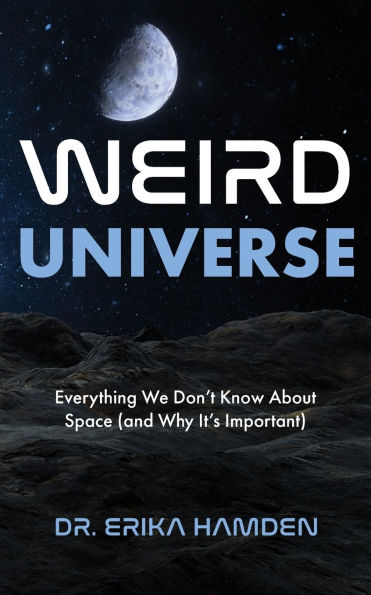Discover the Mysteries of Our Universe
Weird Universe is your gateway to the wonders of space. Have you ever looked up at the night sky and marveled at the mysteries hidden beyond the stars? This book takes that curiosity and turns it into an accessible, fun introduction to space, packed with all the weirdness we've discovered out there.
#1 New Release in Astronomy, Astrophysics & Space Science, and Cosmology
Unlock the wonders of space with a fresh and exciting perspective.
Erika Hamden, a renowned astrophysicist and educator, brings her passion for space to life in this engaging book. With years of experience studying the cosmos, Hamden specializes in making complex topics fun and easy to understand. Her expertise shines through as she leads readers on an exploration of the strangest and most awe-inspiring phenomena in space. Whether you're fascinated by the biggest black holes, curious about the history of NASA, or simply want to explore the strange and magnificent things we've found in outer space, this book is for you. No prior knowledge required—just a desire to understand more about the cosmos and its connection to life here on Earth..See how space exploration shapes our everyday world. Space isn’t just an abstract concept—it plays a crucial role in shaping the technology we use every day. From NASA’s breakthroughs to innovations inspired by our exploration of the cosmos, Hamden shows how space discoveries influence our world. You’ll also gain insight into the process behind these findings, from the questions scientists ask to the groundbreaking answers they uncover. By the end of the book, you’ll understand not just what we know about the universe, but how we’ve come to know it.
Inside, you’ll find:
- A clear, engaging look at black holes, galaxies, and the history of NASA, explained in simple terms.
- Fascinating insights into how scientists make new discoveries about space, with a focus on how it all connects to us here on Earth.
- Fun and accessible content perfect for all ages, including those learning space for kids and adults who want to dive deeper into the world of astronomy.
If you liked Astrophysics for People in a Hurry, The Illustrated Brief History of Time, or Not Necessarily Rocket Science, you’ll love Weird Universe.
Discover the Mysteries of Our Universe
Weird Universe is your gateway to the wonders of space. Have you ever looked up at the night sky and marveled at the mysteries hidden beyond the stars? This book takes that curiosity and turns it into an accessible, fun introduction to space, packed with all the weirdness we've discovered out there.
#1 New Release in Astronomy, Astrophysics & Space Science, and Cosmology
Unlock the wonders of space with a fresh and exciting perspective.
Erika Hamden, a renowned astrophysicist and educator, brings her passion for space to life in this engaging book. With years of experience studying the cosmos, Hamden specializes in making complex topics fun and easy to understand. Her expertise shines through as she leads readers on an exploration of the strangest and most awe-inspiring phenomena in space. Whether you're fascinated by the biggest black holes, curious about the history of NASA, or simply want to explore the strange and magnificent things we've found in outer space, this book is for you. No prior knowledge required—just a desire to understand more about the cosmos and its connection to life here on Earth..See how space exploration shapes our everyday world. Space isn’t just an abstract concept—it plays a crucial role in shaping the technology we use every day. From NASA’s breakthroughs to innovations inspired by our exploration of the cosmos, Hamden shows how space discoveries influence our world. You’ll also gain insight into the process behind these findings, from the questions scientists ask to the groundbreaking answers they uncover. By the end of the book, you’ll understand not just what we know about the universe, but how we’ve come to know it.
Inside, you’ll find:
- A clear, engaging look at black holes, galaxies, and the history of NASA, explained in simple terms.
- Fascinating insights into how scientists make new discoveries about space, with a focus on how it all connects to us here on Earth.
- Fun and accessible content perfect for all ages, including those learning space for kids and adults who want to dive deeper into the world of astronomy.
If you liked Astrophysics for People in a Hurry, The Illustrated Brief History of Time, or Not Necessarily Rocket Science, you’ll love Weird Universe.

Weird Universe: Everything We Don't Know About Space (and Why It's Important) (Outer Universe, Astrophysics Gifts)
191
Weird Universe: Everything We Don't Know About Space (and Why It's Important) (Outer Universe, Astrophysics Gifts)
191
Product Details
| ISBN-13: | 9781684817283 |
|---|---|
| Publisher: | Mango Media |
| Publication date: | 05/27/2025 |
| Pages: | 191 |
| Product dimensions: | 5.00(w) x 7.90(h) x 0.70(d) |
